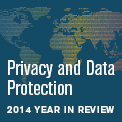As we reported in May 2014, the Federal Trade Commission (FTC) convened stakeholders to explore whether health-related information collected from and about consumers — known as consumer-generated health information (CHI) — through use of the internet and increasingly-popular lifestyle and fitness mobile apps is more sensitive and in need of more privacy-sensitive treatment than other consumer-generated data.
One of the key questions raised during the FTC’s CHI seminar is: “what is consumer health information”? Information gathered during traditional medical encounters is clearly health-related. Information gathered from mobile apps designed as sophisticated diagnostic tools also is clearly health-related — and may even be “Protected Health Information,” as defined and regulated by Health Information Portability and Accountability Act (HIPAA), depending on the interplay of the app and the health care provider or payor community. But, other information, such as diet and exercise, may be viewed by some as wellness or consumer preference data (for example, the types of foods purchased). Other information (e.g., shopping habits) may not look like health information but, when aggregated with other information generated by and collected from consumers, may become health-related information. Information, therefore, may be “health information,” and may be more sensitive as such, depending on (i) the individual from whom it is collected, (ii) the context in which it is initially collected; (iii) the other information which it is combined; (iv) the purpose for which the information was initially collected; and (v) the downstream uses of the information.
Notably, the FTC is not the only regulatory body struggling with how to define CHI. On February 5, 2015, the European Union’s Article 29 Working Party (an EU representative body tasked with advising EU Member States on data protection) published a letter in response to a request from the European Commission to clarify the definitional scope of “data concerning health in relation to lifestyle and wellbeing apps.”
The EU’s efforts to define CHI underscore the importance of understanding CHI. The EU and the U.S. data privacy and security regimes differ fundamentally in that the EU regime broadly protects personally identifiable information. The US does not currently provide universal protections for personally identifiable information. The U.S. approach varies by jurisdiction and type of information and does not uniformly regulate the mobile app industry or the CHI captured by such apps. These different regulatory regimes make the EU’s struggle to define the precise scope and definition of “lifestyle and wellbeing” data (CHI) and develop best practices going forward all the more striking because, even absent such a definition, the EU privacy regime would offer protections.
The Article 29 Working Party letter acknowledges the European Commission’s work to date, including the European Commission’s “Green Paper on Mobile Health,” which emphasized the need for strong privacy and security protections, transparency – particularly with respect to how CHI interoperates with big data – and the need for specific legislation on CHI-related apps or regulatory guidance that will promote “the safety and performance of lifestyle and wellbeing apps.” But, [...]
Continue Reading
read more

 Subscribe
Subscribe


